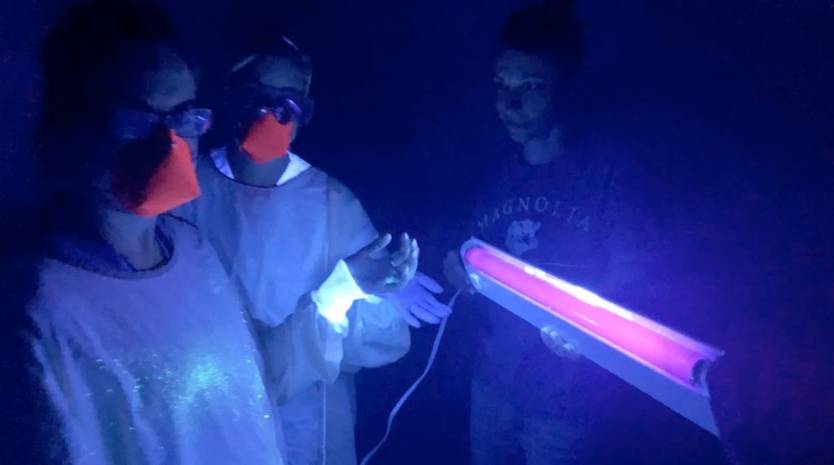- A new study looking at the novel coronavirus on surfaces shows the importance of PPE for frontliners caring for COVID-19 patients.
- Researchers used black light and a special substance to demonstrate exposure to a pathogen and proved that even PPE can’t always keep people safe from a virus.
- The study is consistent with previous experiments that used similar techniques to prove that the novel coronavirus can spread from human to human by touch and reach all sorts of surfaces.
The CDC changed its guidelines a few days ago to make it clear that the primary way the novel coronavirus can spread is from person to person. COVID-19 transmission from surfaces and objects is less likely, but it’s not impossible. The virus can survive on a variety of surfaces, several studies showed, and it’s enough to get it on your hands and then to your eyes, mouth, or nose to risk infecting yourself with the virus.
That’s why everyone should be wearing masks and keeping their distance from other people. Hand washing should be a priority, and you should avoid touching your face at all costs. A new study shows exactly how easy it is for the novel coronavirus to spread, even from surfaces, if the right conditions are met.
Researchers from several universities looked at personal protection equipment (PPE) use in hospitals and how it can lead to COVID-19 exposure. Published in Medical Education, the study simulated the care for an infected person. Healthcare staff had to put on a cap, gown, gloves, eye protection, N95 mask, and a face shield before entering the room. The patient was sprayed down with a nontoxic fluorescent solution to simulate the virus, and the same solution was added to a simulated albuterol nebulizer treatment that the patient used.
Upon completion of the care, the healthcare workers were brought back to a room that was lit using black light. Researchers examined the PPE, which the staff had to remove. The researchers found a fluorescent solution on the skin of healthcare workers, which indicated they made mistakes while handling the PPE after being exposed to the patient.
The solution was often found on the faces and forearms of the staff members, an indication that changes in handling procedures for PPE were required, as seen in the following image:

The study proves the importance of PPE in hospitals treating COVID-19 patients, as the equipment can significantly limit the exposure to the virus. But even then, without proper protocols and training, medical personnel risk exposing themselves to the virus.
The main takeaway for the general public here is that the virus can contaminate your hands and clothes when you are exposed to a person carrying the virus. As a general rule, you’ll have to avoid touching your face mask while you’re outside without washing or sanitizing your hands first.
“Although it doesn’t sound glamorous, hand hygiene is still extremely important,” Dr. Krutika Kuppalli told Healthline, and you should avoid touching your face, regardless of whether you’re wearing a mask or not.
While the study focuses on PPE for medical personnel and frontliners, similar experiments have been conducted to show how easy it is to pass the virus from person to person. Health authorities in Japan used black light in a restaurant to show that a single person was able to infect nine others. At the end of the simulation, the invisible dye was found everywhere in the restaurant, proving why strict hygiene measures and social distancing are recommended practices during the pandemic:
NHK conducted an experiment to see how germs spread at a cruise buffet.
They applied fluorescent paint to the hands of 1 person and then had a group of 10 people dine.
In 30 min the paint had transferred to every individual and was on the faces of 3. pic.twitter.com/1Ieb9ffehp
— Spoon & Tamago (@Johnny_suputama) May 8, 2020
Two months ago, YouTuber Mark Rober ran a similar experiment inside a school, where a teacher and a student were “infected” with a Glo Germ powder that showed up only with black light. It turns out that the fake virus spread easily to the other children, and was discovered on various surfaces inside the classroom:
Around the same time, Vox came out a clip showing how hand washing with soap can kill the coronavirus using a substance that mimics viruses and glows under a UV light:








